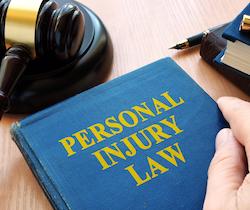Smiles Fool You.
We WIN Legal Fights!

Unforeseen accidents can transform ordinary days into potentially life-altering experiences, especially when they result in personal injuries. Navigating the aftermath in Texas requires an understanding of legal procedures that can be daunting for those unfamiliar with them. Each state, including Texas, has its own personal injury laws and timelines, making local guidance crucial.
The state of Texas imposes specific statutes of limitations on personal injury claims, distinguishing between general cases and those involving medical malpractice. Additionally, the legal principle of comparative negligence may influence outcomes, particularly in situations involving shared fault. Understanding these nuances is key to successfully filing and pursuing a claim.
This article serves as a step-by-step guide through the intricacies of the Texas personal injury claim process. It will explore the crucial elements of establishing liability, the types of damages you may seek, and the specific categories of personal injury cases within Texas jurisdiction.
In Texas, the statute of limitations sets the time frame within which a personal injury claim must be filed. This timeline is crucial for personal injury victims seeking fair compensation for their injuries and financial losses. Understanding these limitations can help ensure you do not miss the opportunity to hold the responsible party accountable.
The general rule for personal injury cases in Texas is that you have two years from the date of the injury to file a lawsuit. This means if you suffer from a car accident or a slip and fall, you must act swiftly. It’s vital to gather evidence and consult with personal injury lawyers within this period. Missing this deadline likely means you can’t pursue a claim, causing you to lose your chance for legal recourse and potential compensation.
Medical malpractice cases have specific rules under Texas law, making them more complex. Victims of medical negligence also generally have a two-year statute of limitations. However, this period may start from the date when the negligence was discovered or should have been discovered. Special rules apply if the malpractice involves a minor. Consulting with experienced personal injury attorneys can help navigate these nuances, ensuring that victims receive the medical care and fair settlement they deserve.
Texas follows a “modified comparative negligence” rule in shared fault scenarios. This means if you are partially at fault for your injury, your compensation may be reduced by your percentage of fault. However, if you are found to be 51% or more at fault, you cannot recover damages. Understanding this rule is key for personal injury victims aiming to achieve fair compensation. Experienced legal teams can assist in these complex cases, ensuring fault parties are properly identified, and rightful compensation is obtained.
When you suffer an injury due to someone else’s actions, you might need to file a personal injury claim. In Texas, this process involves understanding and proving specific elements to succeed in your case. Each element acts as a building block in your claim and may include showing that the other party was at fault, establishing the extent of damages, and seeking fair compensation. By understanding these elements, personal injury victims can better prepare for the legal process. Various factors like duty of care, financial losses, and emotional distress need careful consideration to build a solid claim.
One of the first steps in a personal injury claim is determining who is at fault. This involves proving liability, which means showing that the other party was responsible for your injuries. In Texas, the law demands establishing a duty of care that the at-fault party should have adhered to. It is crucial to gather evidence such as photos, witness statements, or police reports. By doing so, you create a clear picture of how the accident happened. Liability often involves complex issues, and proving fault is vital as Texas follows a comparative negligence rule. This means compensation may be reduced based on the victim’s share of fault.
When pursuing a personal injury claim, it’s essential to understand the types of damages you can claim. Economic damages are the tangible losses you’ve incurred. These can include medical care costs, property damage, and lost wages. Detailed records help in calculating exact amounts. On the other hand, non-economic damages refer to intangible losses such as mental anguish, emotional distress, and loss of consortium. Quantifying these can be challenging but is vital for fair compensation. Both types of damages are considered by personal injury lawyers to ensure victims get the compensation they deserve. Each case is unique, requiring a careful review of all damages involved.
Punitive damages are a different category of compensation in personal injury law. They aim to punish the at-fault party for extreme negligence or intentional harm. In Texas, punitive damages are only awarded if the actions of the fault party were malicious or grossly negligent. Unlike other damages, they focus less on the victim’s losses and more on the reckless behavior of the wrongdoer. These damages are rare and require clear evidence to be granted. The legal team must demonstrate in court why punitive measures are necessary, highlighting egregious actions. Understanding when punitive damages apply can be crucial in holding negligent parties accountable.
Personal injury cases in Texas cover a wide range of incidents where someone is harmed due to another party’s negligence. Here’s a quick overview of common types:
Personal injury victims in Texas should consult with personal injury lawyers to navigate the legal process, ensuring fair compensation for their losses.
An experienced personal injury attorney in Harris County, Galveston County, Fort Bend County, Montgomery County, Brazoria County, Houston, Sugar Land, Missouri City, and Stafford, Texas at Thornton Esquire Law Group, PLLC will take over the case from the very beginning and make sure that you receive fair compensation for your injuries. A personal injury lawyer will help you recover medical expenses, lost wages, pain and suffering, and other losses due to the accident. Contact us today at www.thorntonesquirelawgroup.com for a free case evaluation consultation.